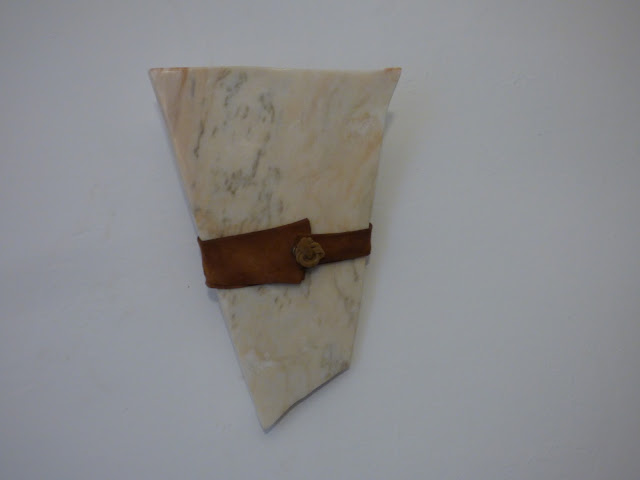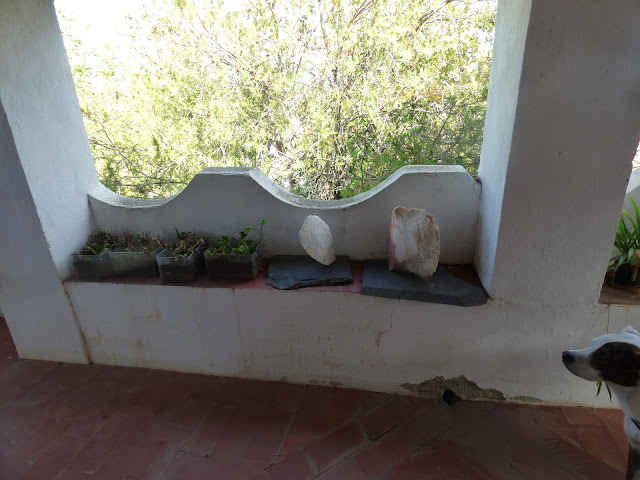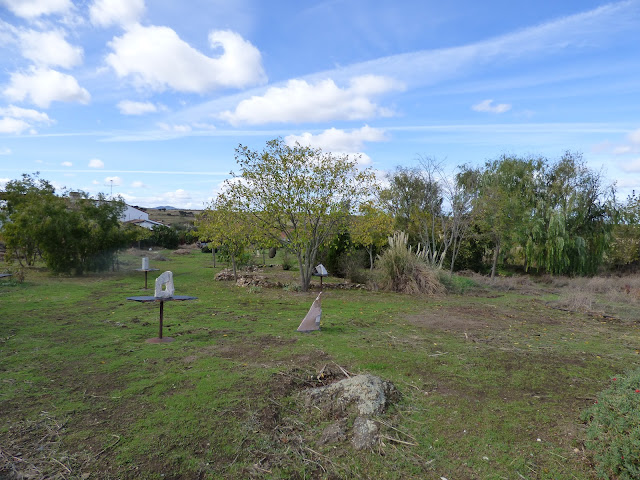With two friends, we visited Salorino, a village about 60 kms west of Caceres, the inspired home and sculpture garden of Lucia Beijlsmit and Jasper Quak. We have known them since our very early days in Extremadura and followed the progress of their house and garden with interest, an ever evolving project created with love and devotion over many years of imaginative hard work.
The village house has been preserved in its original form with some essential renovations, the rooms form a spacious flow for displaying sculptures, paintings and ceramic works.
There is a magical courtyard garden with sculptures seeming to grow organically amidst the abundant greenery.
 |
Here is Lucia's outdoor workshop, small boulders are strewn around, the raw material which will be transformed into her intriguing sculptures which retain an element of their original rough texture contrasting with the dense deep blackness of the sculpted and polished stone, supremely tactile! The sub-volcanic rocks are Diabase or Dolorite similar to volcanic basalt, Lucia and Jasper collect the rocks from the surrounding countryside of Salorino, for the marble sculptures the material is sourced from the quarries of the Portuguese marble towns of Vila Viçosa and Estremoz in the Alentejo, the province just over the nearby border with Portugal.
The sheltered courtyard with its sculpted secrets and charming gazebo has a little gate leading to another surprising aspect, an expanse of meadow with vast views beyond the enclosing stone walls.
Here's wonder dog, Flat Stanley surveying the scenery from the gazebo
The former sheep meadow with its poor soil at the edge of the village was the basis of this now green expanse planted with many trees and shrubs forming a perfect stage for Lucia's sculptures and also the works of other artists collected over the years.
It is possible to visit Lucia and Jasper with a previously arranged appointment. If you are looking for a unique work of art for your garden, patio or home there is much inspiration here.
For more information about Lucia's story, previous exhibitions and contact details-
https://www.luciabeijlsmit.com/























































